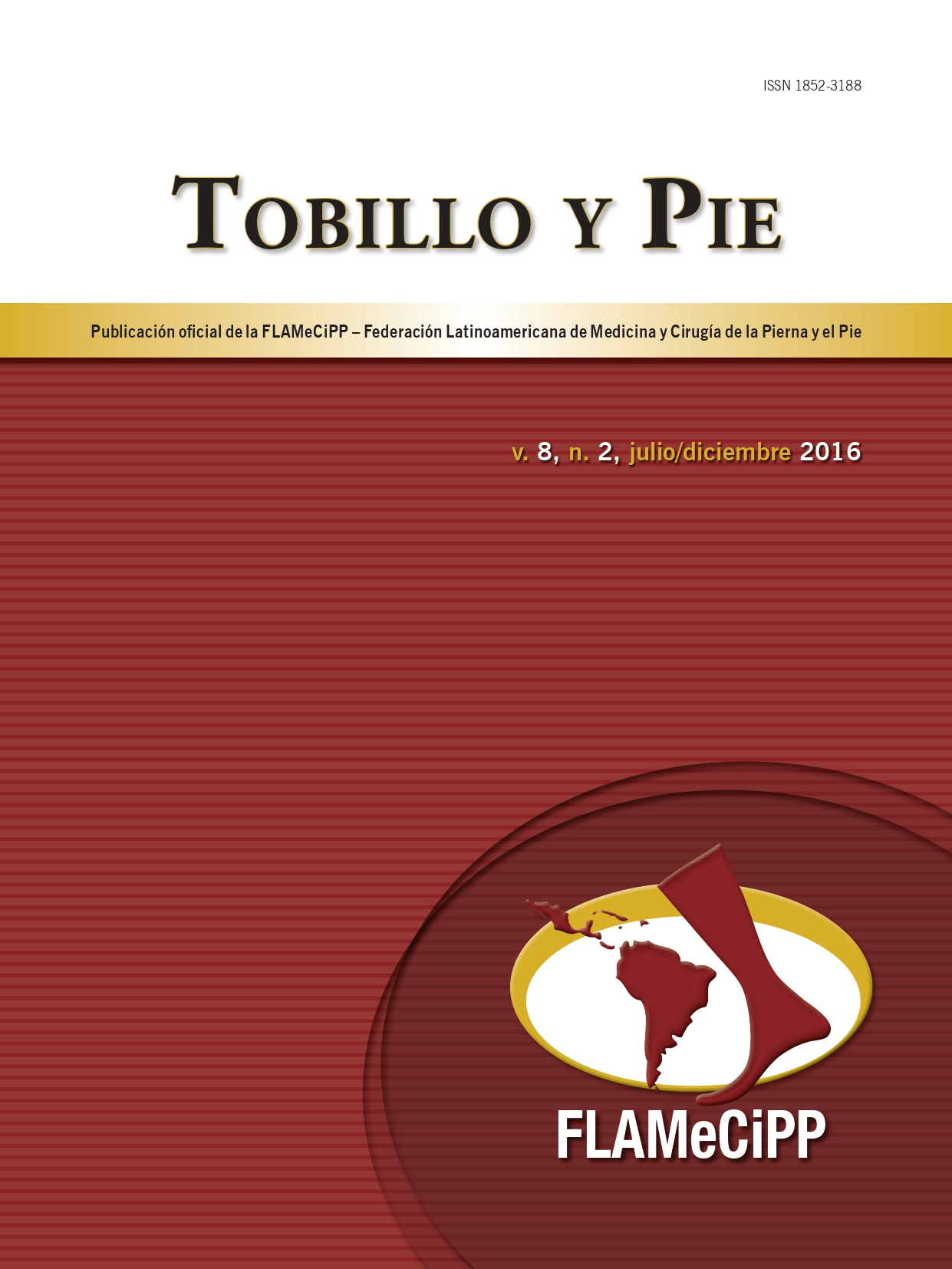Recurrent hallux valgus
managment by algorithm
Keywords:
Halux valgus/surgery, Recurrence, AlgorithmsAbstract
Objective: To present the algorithm for management of hallux valgus recurrence and its results at medium term. Methods: Twenty patients were analyzed retrospectively, operated in the period 2006-2012, with a minimum average follow-up of 18 months. The most frequently used surgery primarily was the scarf osteotomy, followed by the proximal crescentic osteotomy, distal chevron osteotomy, among others. The revision surgery was performed on average 6 years after the primary surgery. The preoperative average AOFAS score was 57 points. Results: The most frequent revision surgery performed was the distal chevron (24%), followed by Akin osteotomy (24%), biplanar chevon (20%), poscow (12%), lapidus arthrodesis (12%) and modified scarf osteotomy (8%). The postoperative average AOFAS score was 80 points. Complications reported were present in 6 patients, including 1 case of hallux varus, loosening of osteosynthesis, partial relapse, claw hallux deformity and postoperative stiffness. 17 patients were satisfied with surgery, and 3 patients were dissatisfied and would not recommend surgery. Discussion: Hallux valgus revision surgery is a complex surgery, with up to 30% of complications. The deformities found can be treated in most cases with osteotomies less aggressive than those performed primarily, if the initial surgery was well indicated and has failed only because of its insufficient corrective power. The revision surgical technique should be selected depending on the remaining deformity, local considerations and expectations of the patient. We believe that a re-revision is unreliable and in these cases a metatarsophalangeal arthrodesis should be considered.


